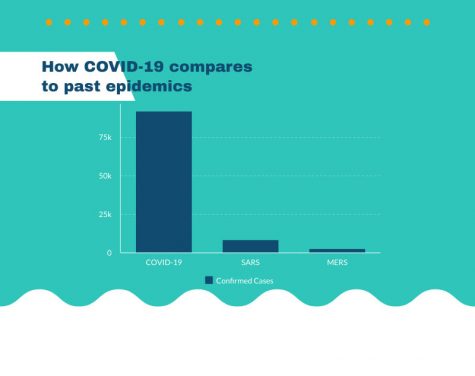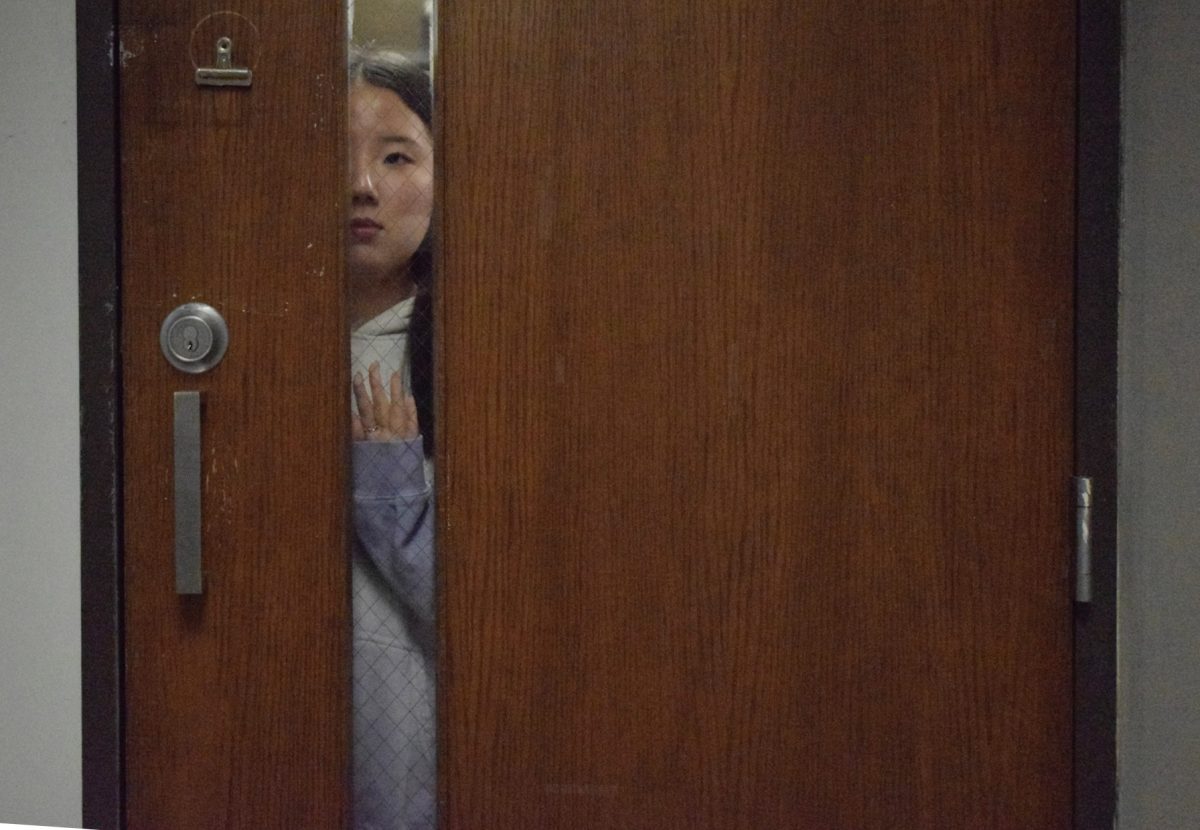When the coronavirus outbreak first made headlines worldwide, the tone around the disease almost felt like a joke. Not many people judged the severity of the situation correctly because the disease originated in Wuhan, China; how could something so far away possibly be a threat to us? However, after 100 days, the coronavirus has managed to spread to more than 90 countries, including the United States. So, letŌĆÖs brush up on how we got to this point and determine how severe this pandemic really is.┬Ā
What is coronavirus?
Coronavirus is the name of a family of viruses. The one most relevant right now is called Severe Acute Respiratory Syndrome Coronavirus 2 (SARS-CoV-2).
Previously referred to as the 2019 Novel Coronavirus, it is more commonly known in its abbreviated version, COVID-19, or just coronavirus. Since January 2020, it has spread worldwide, and the likelihood that someone near you, or even you yourself, contracting the virus just got higher. Coronavirus is extremely contagious, is killing a lot of people and is the worst outbreak we have seen in living memory.┬Ā
According to an interactive map of current global cases by Johns Hopkins University, there are more than a confirmed 190,000 cases of COVID-19 worldwide. Realistically, if this was a disease that was just affecting China, which was the case at first, it would not reach global news this quickly.┬Ā
How bad is COVID-19 compared to other outbreaks?
In 2003, the SARS epidemic, also caused by a coronavirus, infected 8,437 people and killed 813.
In 2012, there was another coronavirus epidemic caused by The Middle Eastern Respiratory Syndrome (MERS), which infected 2,499 people and killed about 861. COVID-19 has already confirmed more than 100,000 cases. There are probably many more people infected that havenŌĆÖt been tested due to mild symptoms, but thankfully, the mortality rate is low at 7% compared to the 10% rate of SARS and 35% rate of MERS.

An even bigger problem, compared to these other diseases, is that it’s taken COVID-19 a shorter time frame to infect more people. The sheer spread of COVID-19 compared to these other diseases is astounding. For example, we have had 100,000 cases of coronavirus in 53 days, whereas it took SARS eight months to infect 800 people. Furthermore, it took MERS a whole year to infect 200 people, so clearly, COVID-19 is showing a much more rapid rate of infection. It is also important to remember there is no certified vaccine for COVID-19 currently, making it difficult to combat.
What are the chances of contracting COVID-19?
This really depends on the country you live in due to the strength of that countryŌĆÖs healthcare system, but right now, we must be proactive about prevention rather than reactive. Basic measures can easily decrease your chance of contracting the virus, such as washing your hands frequently and thoroughly, avoiding touching your face, nose and eyes, avoiding close contact with other people and staying home if you are sick. Social distancing may be the most important factor in preventing the spread of COVID-19, which means avoiding large crowds as much as possible. Practicing these precautions can prevent the virus from spreading from one person to another.┬Ā┬Ā
So, should we be worried?
Well, we can be worried, but we definitely shouldn’t panic. Rather than panicking, we should make sure that we are staying alert and informed about all findings regarding the virus and make sure you are doing your part in actively preventing the virus. The popular social media hashtag, #alertnotanxious, sums up how we should be reacting to COVID-19. The only reason COVID-19 has gotten this much attention is that the media has blown its severity out of proportion. However, do not ignore its existence; take precautions to keep yourself and those around you safe from the spread of COVID-19.



![Sitting courtside before a junior varsity girlsŌĆÖ tennis match, senior Tanisi Saha rushes to finish her homework. Saha has found herself doing academic work during her athletic activities since her freshman year. ŌĆ£Being in sports has taught me how to stay organized and on top of my schoolwork. [With] a busy practice and game schedule, IŌĆÖve learned to manage my homework and study time better,ŌĆØ Saha said.](https://pwestpathfinder.com/wp-content/uploads/2025/11/DSC_0022-1200x800.jpg)
![Sophomore Maryem Hidic signs up for an academic lab through Infinite Campus, a grading and scheduling software. Some students enjoyed selecting their responsive schedule in a method that was used school-wide last year. ŌĆ£I think it's more inconvenient now, because I can't change [my classes] the day of, if I have a big test coming and I forget about it, I can't change [my class],ŌĆØ sophomore Alisha Singh said.](https://pwestpathfinder.com/wp-content/uploads/2025/10/DSC_0012-1200x801.jpg)
![Senior Dhiya Prasanna examines a bottle of Tylenol. Prasanna has observed data in science labs and in real life. ŌĆ£[I] advise the public not to just look or search for information that supports your argument, but search for information that doesn't support it,ŌĆØ Prasanna said.](https://pwestpathfinder.com/wp-content/uploads/2025/10/DSC_0073-2-1200x800.jpg)
![Junior Fiona Dye lifts weights in Strength and Conditioning. Now that the Trump administration has instituted policies such as AI deregulation, tariffs and university funding freezes, women may have to work twice as hard to get half as far. "[Trump] wants America to be more divided; he wants to inspire hatred in people,ŌĆØ feminist club member and junior Clara Lazarini said.](https://pwestpathfinder.com/wp-content/uploads/2025/05/Flag.png)
![As the Trump administration cracks down on immigration, it scapegoats many immigrants for the United StatesŌĆÖ plights, precipitating a possible genocide. Sophomore Annabella Whiteley moved from the United Kingdom when she was eight. ŌĆ£ItŌĆÖs pretty scary because IŌĆÖm on a visa. When my visa expires next year, IŌĆÖm not sure whatŌĆÖs going to happen, especially with [immigration] policies up in the air, so it is a concern for my family,ŌĆØ Whiteley said.](https://pwestpathfinder.com/wp-content/uploads/2025/05/DSC_0077-7copy.jpg)
![Shifting global trade, President Donald TrumpŌĆÖs tariffs are raising concerns about economic stability for the U.S. and other countries alike. ŌĆ£[The tariffs are] going to pose a distinct challenge to the U.S. economy and a challenge to the global economy on the whole because it's going to greatly upset who trades with who and where resources and products are going to come from,ŌĆØ social studies teacher Melvin Trotier said.](https://pwestpathfinder.com/wp-content/uploads/2025/05/MDB_3456-1200x800.jpg)



![Some of the most deadly instances of gun violence have occurred in schools, communities and other ŌĆśsafe spacesŌĆÖ for students. These uncontrolled settings give way to the need for gun regulation, including background and mental health checks. ŌĆ£Gun control comes about with more laws, but there are a lot of guns out there that people could obtain illegally. What is a solution that would get the illegal guns off the street? We have yet to find [one],ŌĆØ social studies teacher Nancy Sachtlaben said.](https://pwestpathfinder.com/wp-content/uploads/2025/01/DSC_5122-1200x800.jpg)

![Sophomore Shree Sikkal Kumar serves the ball across the court in a match against Lindbergh. Sikkal Kumar has been a varsity member of the varsity girlsŌĆÖ tennis team for two years, helping her earn the number two rank in Class 2 District 2.ŌĆ£When matches are close, itŌĆÖs easy to get nervous, but I [ground] myself by[staying] confident and ready to play,ŌĆØ Sikkal Kumar said.](https://pwestpathfinder.com/wp-content/uploads/2025/11/DSC2801-1200x798.jpg)
![Dressed up as the varsity girlsŌĆÖ tennis coach Katelyn Arenos, senior Kate Johnson and junior Mireya David hand out candy at West HighŌĆÖs annual trunk or treat event. This year, the trunk or treat was moved inside as a result of adverse weather. ŌĆ£As a senior, I care less about Halloween now. Teachers will bring their kids and families [to WestŌĆÖs Trunk or Treat], but there were fewer [this year] because they just thought it was canceled [due to the] rain. [With] Halloween, I think you care less the older you get,ŌĆØ Johnson said.](https://pwestpathfinder.com/wp-content/uploads/2025/10/DSC00892-1-1200x800.jpg)
![Focused on providing exceptional service, sophomore Darsh Mahapatra carefully cleans the door of a customerŌĆÖs car. Mahapatra has always believed his customers deserve nothing less than the best. ŌĆ£[If] theyŌĆÖre trusting us with their car and our service, then I am convinced that they deserve our 100 percent effort and beyond,ŌĆØ Mahapatra said.](https://pwestpathfinder.com/wp-content/uploads/2025/10/DSC_0018-1200x800.jpg)
![Sophomore Aleix Pi de Cabanyes Navarro (left) finishes up a soccer game while junior Ava Muench (right) warms up for cross country practice. The two came to Parkway West High School as exchange students for the 2025-2026 school year. ŌĆ£The goal for the [exchange] program is to provide opportunities for both Parkway students and our international exchange students to learn about other cultures, build connections and become confident, capable, curious and caring ŌĆö ParkwayŌĆÖs Four CŌĆÖs ŌĆö in the process,ŌĆØ Exchange Program Lead Lauren Farrelly said.](https://pwestpathfinder.com/wp-content/uploads/2025/10/Feature-Photo-1200x800.png)
![Leaning on the podium, superintendent Melissa Schneider speaks to Parkway journalism students during a press conference. Schneider joined Parkway in July after working in the Thompson School District in Colorado. ŌĆ£My plan [to bond with students] is to get things on my calendar as much as possible. For example, being in [classes] is very special to me. I am trying to be opportunistic [meeting] kids [and] being in [the school] buildings. I have all the sports schedules and the fine arts schedules on my calendar, so that when I'm available, I can get to them,ŌĆØ Schneider said.](https://pwestpathfinder.com/wp-content/uploads/2025/09/IMG_5425-1200x943.jpeg)
![Gazing across the stage, sophomore Alexis Monteleone performs in the school theater. The Monteleone familyŌĆÖs band ŌĆ£Monte and the MachineŌĆØ has been releasing music since 2012, but Alexis started her own solo career in 2024 with the release of her first single, Crying Skies. ŌĆ£My whole family is very musical, [and I especially] love writing [songs with them],ŌĆØ Monteleone said.](https://pwestpathfinder.com/wp-content/uploads/2025/09/DSC7463-1200x798.jpg)

![Leaping through the air, senior Tyler Watts celebrates his first goal of the season, which put the Longhorns up 1-0 against the Lafayette Lancers. Watts decided to play soccer for West for his last year of high school and secured a spot on the varsity roster. ŌĆ£[Playing soccer for West] is something I had always dreamed of, but hadnŌĆÖt really had a good opportunity to do until now. ItŌĆÖs [really] fun being out [on the field], and IŌĆÖm glad I decided to join the team. ItŌĆÖs just all about having fun with the boys and enjoying what time we have left together,ŌĆØ Watts said.](https://pwestpathfinder.com/wp-content/uploads/2025/09/DSC_1951-1200x855.jpg)


Patrick Troy • Mar 25, 2020 at 5:29 pm
Well written as usual, Ridwan.
Carly Roach • Mar 25, 2020 at 1:29 pm
Thanks for sharing your research, Ridwan!